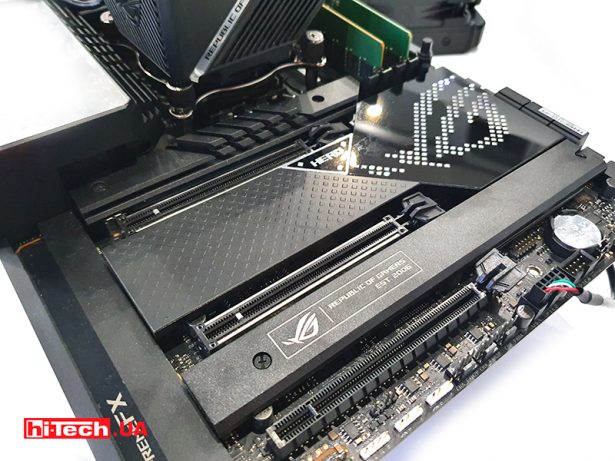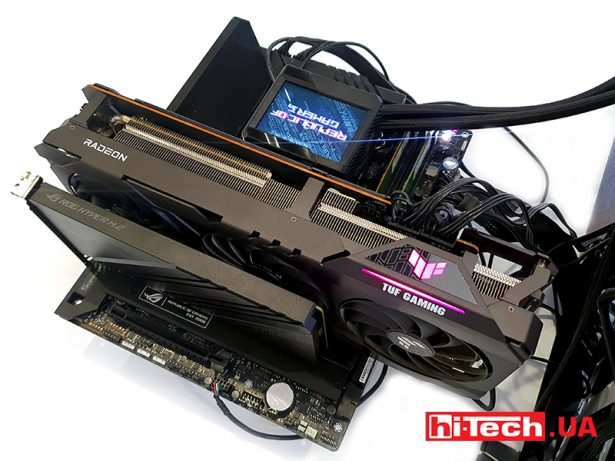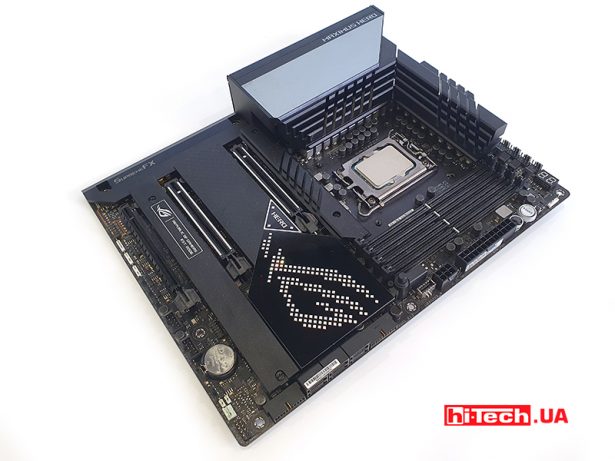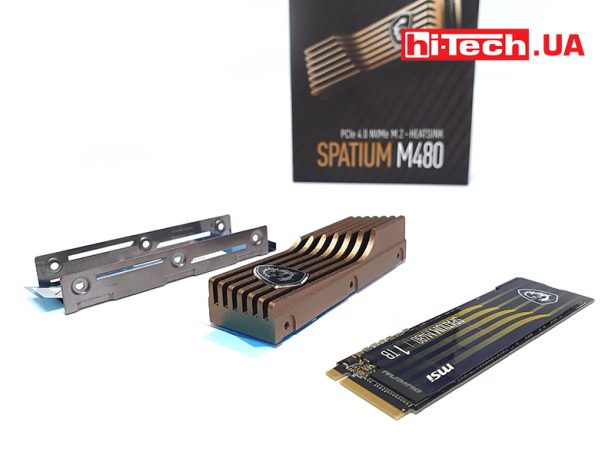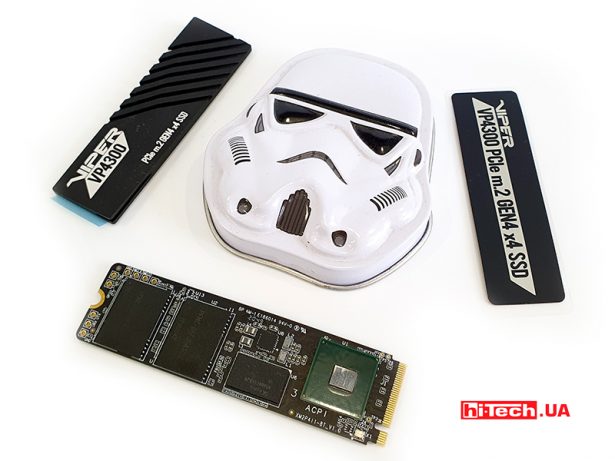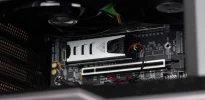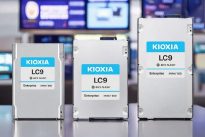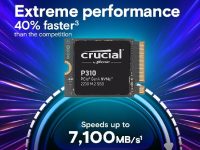Comparative review of SSDs with PCIe 4.0 from Crucial, MSI, Patriot and Transcend
25.07.22
This year, we managed to conduct several cycles of tests of solid-state drives of various brands. What they have in common is support for the PCIe 4.0 interface. However, it so happened that our Test Laboratory received various representatives – both quite productive and budget ones, which are on the border with models that support PCIe of the previous generation. Another coincidence was the opportunity to test the SSD with different controllers. In addition to Phison, which we often encountered in drives in recent years, we also received devices with Silicon Motion, Micron and Innogrit controllers.
With this in mind, this material is rather a collection of reviews of solid-state drives. It is not entirely appropriate to directly compare them with each other. Moreover, we unfortunately did not manage to get all the samples of the same capacity so that we could compare the speed figures. However, all this made it possible to get to know representatives of different classes and price ranges. And taking into account that in almost all cases the declared speeds corresponded to the actual measurements, you, dear readers, can rely on the declared characteristics when choosing an SSD of the required volume.
Participants:
A bit of theory
The PCI Express interface is used to connect video cards, solid-state drives (SSD), sound and network cards, as well as other devices.
The specification of the previous PCI Express 3.0 was approved as far back as 2010 and it provided bandwidth of GT/s (gigatransfers per second) per line.
Compared to the PCIe 3.0 specification, the maximum data transfer rate on the PCI Express 4.0 bus is doubled — from 8 to 16 GT/s. In addition, latency is reduced, scalability is improved, and virtualization support is improved. PCIe 4.0 was approved in October 2017
It is worth noting that the final version of the PCI Express 5.0 standard appeared in May 2019. With it, the data transfer speed on the bus without taking into account duplex is 32 GT/s. For 4 lines, the data transfer speed is 16 GB/s, for 16 lines — 64 GB/s. This speed is expected to have a positive impact on projects related to virtual reality.
The final specification of the PCI Express 6.0 standard is expected this year, which will provide data transfer rates of 32 GB/s for 4 lanes and 128 GB/s for 16 lanes.
Devices with support for new versions of PCI Express do not appear quickly. At the moment, the main version can be considered 4.0, it is with it that most new video cards and SSDs are released. As for version 5.0, there are almost no devices for it yet. Support for PCI Express 5.0 was received by new motherboards for Intel processors.
The generalized table of characteristics of all SSD test participants with PCIe 4.0 looks like this:
| Specifications for 1 TB versions |
Transcend MTE240S (TS1TMTE240S) |
Crucial P5 Plus 2280SS (CT2000P5PSSD8) |
| Interface: | PCIe 4.0 x4 with NVMe | |
| Form factor: | M.2 2280 | |
| Memory type: | 3D TLC | |
| Warranty: | 5 years | |
| Available volumes: | 500 GB, 1 TB | 500GB, 1TB, 2TB |
| Controller: | Silicon Motion SM 2267 | Micron DM02A1 |
| Declared resource: | 1700 TBW | 600 TBW |
| Price of 1 TB version (approximate): | $180 | $190 |
| Specifications for 1 TB versions |
MSI Spatium M480 HS (S78-440L430-P83) |
Patriot Viper VP4300 (VP4300-1TBM28H) |
| Interface: | PCIe 4.0 x4 with NVMe | |
| Form factor: | M.2 2280 | |
| Memory type: | 3D TLC | |
| Warranty: | 5 years | |
| Available volumes: | 1 TB, 2 TB | 1 TB, 2 TB |
| Controller: | Phison PS5018-E18 | Innogrit IG5236 |
| Declared resource: | 700 TBW | 1000 TBW |
| Price of 1 TB version (approximate): | $195 | $275 |
Test platform
To perform the test procedures, we used the Asus ROG Maximus Z690 Hero motherboard with support for the LGA 1700 socket. Two 8-pin connectors are implemented to power the processor. The processor power circuit is made according to the 18+2+1 scheme (21 phases in total, 18 on VCore, 2 on VCCIO and 1 on the integrated graphics core).
Two PCIe 5.0 x16 slots are available for installing video cards and expansion cards (from the processor; work in x16+0 or x8+x8 mode) and one PCIe 4.0 x16 slot (from the chipset, maximum x4 or x4/x4 operation mode when using ROG Hyper M .2 Card).
The board supports RAM frequencies up to 6400 MHz. There are four DIMM slots on the board for installing memory modules. It uses a high-speed Intel I225-V Ethernet controller operating at 2.5 Gbit/s. The Intel AX-210NGW controller is available, through which Wi-Fi 6E (802.11a/b/g/n/ac/ax) and Bluetooth 5.2 are implemented.
Three connectors are available for installing M.2 SSD drives on the board itself:
- The M.2_1 connector connected to the processor supports 2242/2260/2280/22110 format drives with PCIe 4.0 x4 interface.
- The M.2_2 connector, in turn, is implemented by the chipset. It supports 2242/2260/2280 format drives with PCIe 3.0 x4 interface.
- The M.2_3 connector is implemented by the chipset. It supports 2242/2260/2280 format drives with PCIe 4.0 x4 or SATA interface.
You can read a detailed review of the motherboard Asus ROG Maximus Z690 Hero on our website .
| Test Platform | |
| Motherboard: | ASUS ROG Maximus Z690 Hero |
| Processor: | Intel Core i9-12900K |
| SRO: | ASUS ROG Ryujin II 360 |
| Video card: | ASUS TUF Gaming Radeon RX 6800 XT OC |
| RAM: | ASUS, 32 GB DDR5 |
| Power supply: | Seasonic Platinum-750 Snow Silent |
| OS: | Microsoft Windows 10 Pro 64-bit |
Test participants
Crucial P5 Plus 2280SS
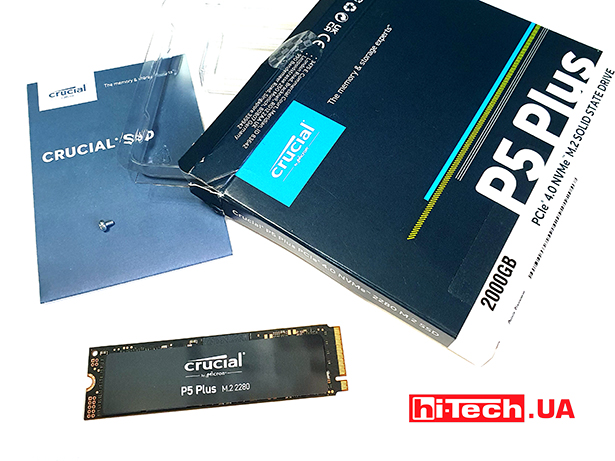
Crucial P5 Plus solid-state drives are new flagship models from Micron. Unlike the P5 line, there is no 250 GB option in the new line. Only 500, 1000 and 2000 GB drives are available on the market. All of them are equipped with DRAM cache and use the new 176-layer TLC NAND memory.
The new line uses a new DM02A1 controller based on six ARM cores of different types: two Cortex-R5 and four Cortex-M3. Cortex-R5 are responsible for the logic of the controller, and Cortex-M3 are responsible for servicing the flash memory array and background operations. It, in turn, works on 8 channels with a new memory with 176 layers from Micron itself, which is currently one of the fastest in the industry.
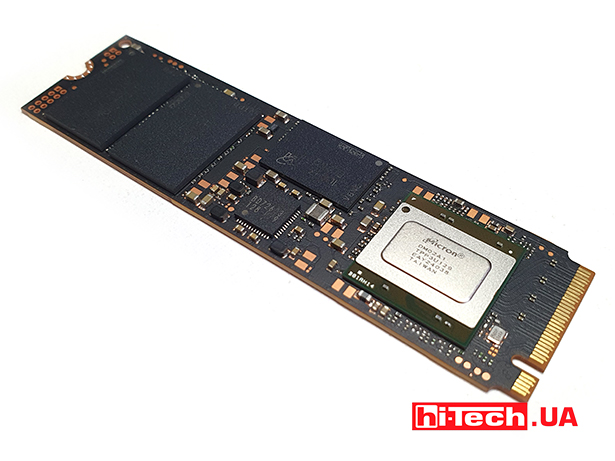
All these innovations are complemented by LPDDR4 DRAM cache memory. For the 500 and 1000 GB SSD versions, the cache size is 1 GB. And for the 2 TB version, as in our case, 2 GB.
TBW (Total Byte Written) parameter stated by the manufacturer for three available capacities – 300, 600 and 1200 TB. The working time for failure is 2 million hours. The manufacturer’s warranty is 5 years.
| SSD characteristics Crucial P5 Plus PCIe M.2 2280SS CT2000P5PSSD8 | |
| Interface: | PCIe 4.0 x4 with NVMe |
| Form factor: | M.2 2280 |
| Available volumes: | 500GB, 1TB, 2TB |
| Controller: | Micron DM02A1 |
| Memory type: | 3D TLC |
| Resource: | 1200 TBW |
| Storage volume in the test: | 2 TB |
| Warranty: | 5 years |
MSI Spatium M480
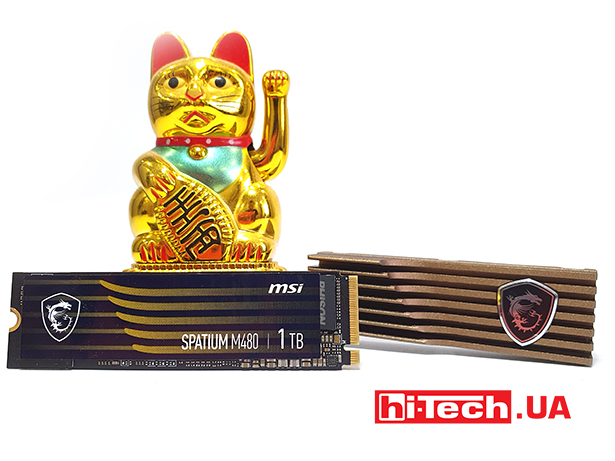
The Spatium M480 is offered in one and two terabyte versions. For the first, the declared linear read and write speeds are at the level of 7000 and 5500 MB/s, respectively, and for the second – 7000 and 6800 MB/s.
Both drives are equipped with a DRAM buffer of one or two gigabytes, depending on the capacity, of the DDR standard. 96-layer 3D NAND produced by Micron is used as flash memory. Storage devices comply with NVMe 1.4 specifications and are connected via four lines of the PCI Express 4.0 interface.
The Phison PS5018-E18 controller is equipped with a three-core 32-bit ARM processor and can fully utilize the bandwidth of PCIe 4.0. In terms of size, it is quite compact because it is created according to the 12-nm process. However, the M480 model is not the most productive because MSI uses the more affordable version of Micron’s 96-layer TLC flash memory, rather than the more productive 176-layer memory.
1 GB of DDR4 RAM is used, which is represented by an SK Hynix chip. Data is written to memory in SLC mode, after which it is transferred to TLC cells at times of inactivity. After running the tests, we found that the M480 recorded data at three speed levels.
The SSD warranty is 5 years or 700TB of recorded data for the 1TB model and 1400TB for the 2TB solution, whichever comes first.
| Features MSI Spatium M480< /strong> (S78-440L490-P83) | |
| Interface: | PCIe 4.0 x4 with NVMe |
| Form factor: | M.2 2280 |
| Available volumes: | 1.2 TB |
| Controller: | Phison PS5018-E18 |
| Memory type: | 3D NAND TLC (Micron 96L) |
| Declared resource: | 700 TBW |
| Storage volume in the test: | 1 TB |
| Warranty: | 5 years |
Patriot Viper VP4300
The Viper VP4300 series includes 1TB and 2TB models. Our younger version has two 256GB TLC flash memory chips on one side of the board, a 512MB DDR4 DRAM chip, and an 8-channel Innogrit IG5236FAA controller.
The Innogrit IG5236 chip is manufactured using the 12-nm FinFET process at TSMC’s production facilities. From third-party sources, we found out that Micron’s fourth-generation 96-layer TLC 3D NAND crystals are used. The nuance is that there is currently a more modern 176-layer memory of the fifth generation, which is about 30% faster. But, unfortunately, it is not possible to connect it to the Innogrit IG5236 controller, because it uses the 1600 MHz ONFI interface, which is not supported by it.
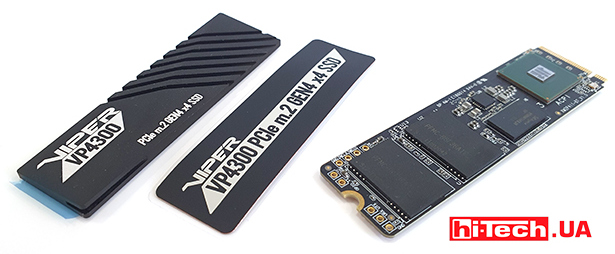
In this model, the volume of the SLC cache is approximately 35% of the free capacity. After it is filled, with continuous recording, the speed starts to fluctuate in the range of 740-2500 MB/s. The minimum speed may be several times lower than that of competitors, but such cases are almost never encountered in real operation.
Patriot states that its flagship drives can be overwritten 1,000 times during its lifetime without loss of warranty, which exceeds typical limits from other manufacturers. At the same time, Viper VP4300 series drives have a rather small reserve area – only 7% of the full capacity.
| Features Patriot Viper VP4300 ( VP4300-1TBM 28H) | |
| Interface: | PCIe 4.0 x4 with NVMe |
| Form factor: | M.2 2280 |
| Available volumes: | 1.2 TB |
| Controller: | Innogrit IG5236 |
| Memory type: | TLC 3D NAND (Micron) |
| Declared resource: | 1000 TBW |
| Storage volume in the test: | 1 TB |
| Warranty: | 5 years |
Transcend MTE240S
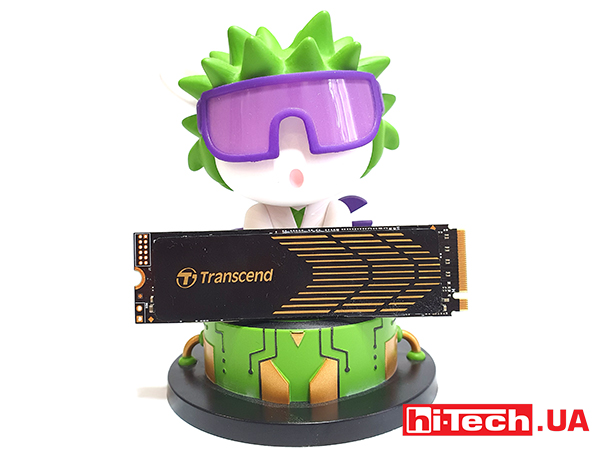
All Transcend products are based on Silicon Motion (SMI) controllers, which offered the performance controller SM2264 and the affordable SM2267. But with the production of the flagship controller, SMI encountered unforeseen problems. Therefore, Transcend adjusted the plans and postponed the release of the flagship SSD with the PCIe 4.0 interface, limiting itself to the release of an inexpensive and mass storage device on the SM2267 chip.
The SM2267 controller is dual-core and four-channel, which causes its rather low power compared to the controllers used in PCIe 4.0 flagships. The quad-channel flash array is paired with 1,200 MHz devices that are even theoretically incapable of pumping four PCIe 4.0 lanes with a peak throughput of 7.9 GB/s. Therefore, the passport characteristics of the MTE240S are more comparable to the characteristics of a drive with a PCIe 3.0 interface. The maximum linear speed that the MTE240S can deliver is only 5% higher than the linear speeds provided by quality models with PCIe 3.0.
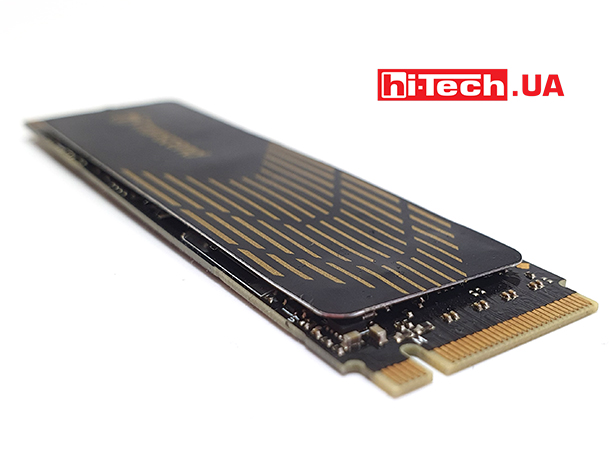
The SSD is assembled on 512-gigabit crystals of 96-layer TLC 3D NAND memory produced by Micron, eight of which are distributed over two microcircuits.
Transcend MTE240S is distinguished by a high resource compared to models equipped with PCIe 3.0. Transcend focuses on high-quality flash memory chips, which allowed the company to declare the possibility of uninterrupted rewriting of 95% of SSD capacity every day during the five-year warranty period. This means that a total of 1,700 TB of data can be recorded on the terabyte MTE240S. There are almost no models similar in endurance in this price category.
The Trancend drive outperforms solutions built on Phison controllers. Moreover, despite the rather weak characteristics of the SMI SM2267 controller, in real scenarios in resource-intensive applications, the Transcend MTE240S does not look like an outsider.
| Features Transcend MTE240S M.2 2280 PCIE 4.0 (TS1TMTE240S) | |
| Interface: | PCIe 4.0 x4 with NVMe |
| Form factor: | M.2 2280 |
| Available volumes: | 500 GB, 1 TB |
| Controller: | Silicon Motion SM 2267 |
| Memory type: | 3D TLC |
| Declared resource: | 1700 TBW |
| Storage volume in the test: | 1 TB |
| Warranty: | 5 years |
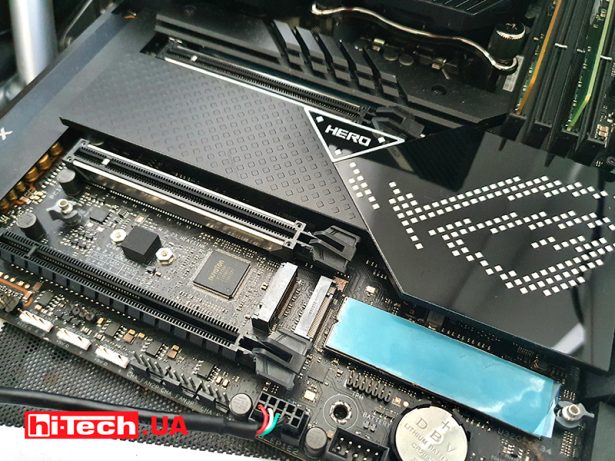
We have summarized the results of speed measurements of all participants in one table, below we will give some comments and note the participants.
| Measurements, MB/sec | Transcend MTE240S (TS1TMTE240S) | Crucial P5 Plus CT2000P5PSSD8 |
| Storage capacity in the test: | 1 TB | 2 TB |
| Declared sw. record: | 3200 | 5000 |
| Declared sw. reading: | 3800 | 6600 |
| CrystalDisk Mark entry: | 3114 | 5145 |
| CrystalDisk Mark reading: | 3124 | 6666 |
| PC Mark Full System Drive: | 277 | 413 |
| PC Mark Quick System Drive: | 214 | 342 |
| PC Mark Data Drive: | 322 | 572 |
| ATTO entry: | 3490 | 4800 |
| ATTO reading: | 2990 | 6160 |
| Measurements, MB/sec | MSI Spatium M480 (S78-440L430-P83) | Patriot Viper VP4300 (VP4300-1TBM28H) |
| Storage capacity in the test: | 1 TB | 1 TB |
| Declared sw. record: | 5500 | 6800 |
| Declared sw. reading: | 7000 | 7400 |
| CrystalDisk Mark entry: | 5294 | 5621 |
| CrystalDisk Mark reading: | 6957 | 7134 |
| PC Mark Full System Drive: | 367 | 304 |
| PC Mark Quick System Drive: | 301 | 278 |
| PC Mark Data Drive: | 590 | 536 |
| ATTO entry: | 4920 | 5230 |
| ATTO reading: | 6590 | 6600 |
Conclusions and Titles
As for positioning, as we have already noted, they are quite distinct among the participants of the tests, and it will not be possible to reduce them to our usual groups of the most productive, accessible, optimal ones. Therefore, we will comment on them and analyze the measurement results in combination with a price offer.
Transcend MTE240S is not a leader in terms of speeds and performance, but it looks like a good and affordable SSD with PCIe 4.0 interface support. Among its advantages, we can highlight low heating compared to alternatives on Phison controllers and extremely high rewriting resource – 1700 TBW. Nominally, it is the cheapest among all participants, but given its characteristics, it is not appropriate to put it in the same row as other participants. Transcend MTE240S earns the title of “Mr. Reliability”.
Crucial P5 Plus has become a natural evolution of solid-state drives. It received various amounts of gigabytes to solve user tasks. From a purely fast drive for the operating system – to voluminous and fast storage for the OS, games and demanding software packages. Overall, the Crucial P5 Plus can be called a great choice for applications. Which is further confirmed by its results in PC Mark benchmarks. It has the biggest price advantage, even taking into account the unstable present, so along with the advantage in working with software, it can also boast affordability.
Patriot Viper VP4300 turned out to be the leader in tests of writing and reading different volumes of data. Its controller does a good job of freeing flash memory without compromising parallel activity. SSD has a delivery set with a thin disposable graphene radiator for laptops and monoblocks and a larger heat sink for desktop setups. The variety of its applications includes not only “large” systems such as gaming desktops, but also laptops and game consoles. However, its cost is quite significant.
MSI Spatium M480 appears to be far from the most typical storage vendor in principle. However, as practice has shown, the company producing components, PCs and peripherals made the right bet on partnership. The Spatium M480 flash drive is a reference solution designed by MSI and comes with an original and efficient cooling system in the company’s design. In terms of linear speeds, this SSD is one of the fastest on the market and, surprisingly, it has a fairly optimal price, with an additional cooling radiator included. Therefore, we would call the MSI Spatium M480 the most optimal choice amongSSDs with PCIe 4.0 considering the combination of factors.
hi-tech.ua project manager
Don't miss interesting news
Subscribe to our channels and read announcements of high-tech news, tes
Oppo A6 Pro smartphone review: ambitious

Creating new mid-range smartphones is no easy task. Manufacturers have to balance performance, camera capabilities, displays, and the overall cost impact of each component. How the new Oppo A6 Pro balances these factors is discussed in our review.
Editor’s Choice 2025. Best devices of the year by hi-tech.ua

The best gaming laptops, mice for work, gaming keyboards, smartphones, and wireless headphones of 2025. Among them, we will highlight the most interesting ones and those that we can recommend buying.
Honor почне випускати ігрові смартфони games Honor smartphone
За швидкодію відповідають флагманські платформи Qualcomm: Honor Win побудований на Snapdragon 8 Elite, а Honor Win Pro – на новітньому Snapdragon 8 Elite Gen 5
Motorola introduces budget smartphone Moto G Power (2026) Motorola smartphone
Motorola introduces Moto G Power (2026) smartphone focused on autonomy, reliability and everyday practicality


